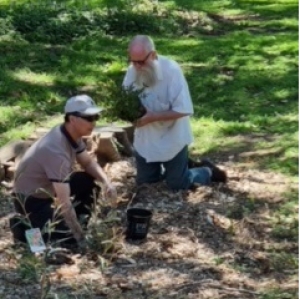Peter MALONE
HENRY POOLE IS HERE
(US, 2008, d. Mark Pelington)
This is a film for those who prefer nice films with a touch of the spiritual. It is a film that would give ulcers to devout members of the Sceptics Society. It would be dangerous to the health of those who are members of the Association for the Prevention of Sentiment in the Movies.
Why is this?
Henry Poole is a morose man who wants to buy the house he grew up in but has to settle for one up the street. He wants to be alone and says he will not be there long – which makes us suspect already that he is not long for this world. This does not make for a cheery plot. There are attempts to be cheery on the part of the neighbours and the check-out girl at the supermarket who, despite her thick lenses, quickly sees that Henry is a miserable human being and she offers herself as a good listener. No deal. Henry just wants to be left alone.
What changes the plot and what disturbs Henry is his Latino neighbour detecting the face of Jesus on an outside wall that has been newly plastered. Is it or isn't it? The audience never gets a really good look. And, that is one of the points. Does it matter? If it doesn't, why bother? And if it does, what does it mean in terms of faith and, of course, miracles?
Henry is of the sceptic school of thought. However, people start to come in pilgrimage. The little girl next door (who records voices, which becomes an important plot device at the end) has not spoken since her father abandoned her and her mother a year earlier. Henry becomes friendly with her and she speaks, miracle or not. Her mother is a charming and cheerful person and makes friends with Henry.
Most audiences will see where this is going. Henry is faced with a belief crisis. The solution will satisfy those who want a feeling answer to issues. By that time, the sceptics may have fled the cinema.
Luke Wilson, sad and lonely, is on screen most of the time as Henry. Radha Mitchell is very nice as the sympathetic friend. Adriana Barazza is convincing as the face-of-Christ-prone neighbour.
And, faith and miracles are still possible.
GABRIEL

GABRIEL
Australia, 2007, 110 minutes, Colour.
Andy Whitfield, Dwaine Stevenson, Samantha Noble.
Directed by Sean Abbes.
Some dark comic-strip, graphic novel films have been made in Australia, films like Dark City and The Matrix series, so why not a home grown version with nods to films like Constantine (in which the angel Gabriel, in the form of Tilda Swinton, had a leading role)? And, small-budget and shooting time extended over a long period to get the film made, here it is.
While Gabriel, Michael and Raphael are central characters (and are referred to as Arc Angels), there is not much further biblical reference and God is not a central player at all. Rather, this is a mixum gatherum of biblical names, myths and legends and some invention on the part of the writer and director. Oh, there is a purgatory which seems a variation on the dark city where souls go when not able to get to heaven and where angels go to help out and redeem people, assuming human appearances and sometimes becoming human.
The film relies on dark and often sinister visual style, a bit like the Matrix underworld. And the style is quite stylish with special attention to the limited locations and costume design. Much has been achieved with comparatively little.
The plot, like most of these graphic stories, is complicated and convoluted. Michael has already gone to the dark city but has failed in his mission. Now Gabriel is the last hope. He has to deal with a sinister character, S, who has had a Lucifer experience and has descended if not into hell at least into this purgatorial nether world.
There are various former angels (which provides some romantic interludes for Gabriel) as well as some humans. Eventually, there are some action sequences of the martial arts and brawl variety – and a twist that shows that evil is more powerful than good and Gabriel is challenged to self-sacrifice with the hope of some light in the darkness.
Andy Whitfield makes a decent Gabriel and Dwaine Stevenson is a sinister S.
A spirited (to coin a phrase) attempt to do something visually creative with popular pop storytelling from an Australian and quite ambitious group of young film-makers.
1.Effective as a thriller? About angels? The conflict between good and evil?
2.The importance of the visual style, mood? The influence of such films as The Matrix, Dark City, Constantine? The influence of the graphic novel film styles? The use of colour, the dark colours? The final light? The importance of close-ups, intensity, faces and interactions? Framing? The city location, dark, the outline? The rooms, the streets, the club, the darkness, grim? The score in the same vein?
3.The introduction and explanations, good and evil, light and grace, the fallen, the two domains, heavenly and hellish, the role of souls, the fallen, the angels and their mission? Purgatory?
4.The issue of freedom, the discussions about no bounds and absolute freedom compared with the discussions at the end, Gabriel and his explanation of free will and choice?
5.Gabriel, an angel, the others sent to the dark city, coming to Earth and being human? Finding Michael’s note, the confrontations? The angel who had become a man, the reactions, the anger? Death? Finding the jade, her work as a prostitute, her angers, Gabriel and his healing her? Going to the club, the angel at the bar, the explanations, his doing his best? The quest, the evil people at the club? The finding of Raphael, healing him? Michael and his being the villain? The sexual encounter with Jade? The build-up to the final confrontation, choices, the fight, Gabriel and his being pierced, his killing Michael with the same lance? Michael giving him the gift of healing? Free will, the finale, standing at the edge of the building, the free gift, the angel falling, the light coming? Gabriel as a symbol, as a character, personality?
6.The other angels and their mission, their closeness, becoming human, trying to destroy the dark, being overcome by the dark, their squalid lives, loss of control? Becoming human and angry, working as a prostitute, capitulating against the evil?
7.The evil angel, his eyes, his assistants, killing rivals? The confrontation with Gabriel? The revelation that he was really Michael, the explanation of what he had done, wanting power, offering Gabriel the opportunity to rule? The final fight, his death, giving Gabriel life?
8.The choreography of the fights, the use of guns, knives? Deaths?
9.The background of angels having to enter into the human world, struggle, fail? The tradition of films on the confrontation between light and dark?
10.The biblical background, the mythological backgrounds? Audience response to angels, the heavenly aspects, hellish, purgatorial? A biblical scenario – without God, yet the language of grace? A secular religious fable?
BROKEN, The

THE BROKEN
UK, 2008, 88 minutes, Colour.
Lena Headey, Richard Jenkins, Asier Newman, Michelle Duncan, Melvil Poupaud, Ulrich Thomsen.
Directed by Sean Ellis.
When one reads that writer-director, Sean Ellis, has been a fashion photographer, it is clear where The Broken gets its stylish look from. And, visually stylish it is with its aerial views of London, its vivid photography of streets and homes and with its sinister moments.
This is a film about mirrors and those who live behind mirrors – and who emerges for not only seven years' bad luck but immediate taking over of the real life selves. There are malevolent doppelgangers behind the mirrors and when they get out, they are merciless. Not a new idea, of course. Kiefer Sutherland discovered this to his cost in the 2008 Mirrors which, in turn, was a remake of a Korean film while the Japanese made Into the Mirror.
There is a certain trickiness in The Broken while we try to work out who is who, especially with Gina, played by Lena Headey. Just when you think you are seeing the malevolent mirror Gina, it turns out to be the nice one and vice versa. (There is also some crypto-science in the background about the rare number of people who have their heart on the right side.) It is clearer with Gina's French boyfriend, Melvil Poupard. He is destroyed and the mirror boyfriend has invaded him. And there is a gory scene where Gina's sister-in-law is taken over.
The other central character is Gina's father, played by American Richard Jenkins (The Visitor).
After a brain-tormenting opening quotation from Edgar Alan Poe about murdering the other self within us, those who want to stay with the film have a demanding task in sorting out what has happened. The dog in the film is credited as Kubrick Ellis – now that's a homage to The Shining!
1.A London horror story? Doubles, doppelgangers, alternate worlds?
2.The glossy look of the film, the director as a fashion photographer, his capturing the atmosphere of London, the city, the streets? The production design? Characters?
3.The title, the mirrors, the alternate people? The actual people and their brokenness? The musical score?
4.The plot and the mystery, the information about those who had their heart on the right side? A physical medical explanation? Or unexplained horror? The characters, their lives, alternate characters, their deaths? Gina and her other self? The mystery of which was which?
5.Gina, at the hospital, her work, her ordinary life, her relationship with Steve, with the doctors, the information about the hearts? Going to her father’s celebration? Danny and his wife? The enjoyment, Steve present? The impact of the breaking mirror? The traditions of breaking mirrors and bad luck? The mirror and the opening to another world on the other side of the mirror?
6.Steve, his transformation, becoming murderous, attacking Kate? The character change?
7.Gina and seeing her other self, driving the car, on the street? The real Gina driving or watching? The accident, hospital? Steve and his behaviour? The doctor and his diagnosis of what was happening? Her dream and the blood seeping through the roof?
8.The car, finding the photo, the other Gina, with her father?
9.Kate, in the bathroom, the mirror, her other self, the violent attack and her death?
10.Steve’s flat, Gina’s search, finding his corpse? Phoning her father to warn him? Steve’s double appearing, the attack on her – and echoes of Psycho?
11.Daniel, the investigation about her flat, finding that the double was in her own flat? Her visit, the attack, the death – and Gina’s realisation that she was the double?
12.The hospital, Gina, Daniel coming, warning him to run?
13.Gina going to her father, his listening, his advice?
13.An eerie atmosphere? Questions of identity, alien selves taking over, the fate of the true self?
BRIDE WARS

BRIDE WARS
US, 2009, 92 minutes, Colour.
Kate Hudson, Anne Hathaway, Kristen Johnston, Candice Bergen.
Directed by Gary Winick.
In the last ten years, moviegoers fond of Hollywood films have seen wedding planners, wedding singers, wedding crashers and a perennial bridesmaid with 27 dresses. For audiences who liked 27 Dresses and looking at bridal magazines, then Bride Wars is as good as any other.
It is confetti-lite.
The plot is fairly simple. Two childhood friends have an ambition to be June brides at New York's Plaza Hotel. Liv (Kate Hudson with black eye make-up and blonde hair which make her look a little sinister) and Emma (Anne Hathaway, no complaints) confide in each other, rely on each other – and become engaged at the same time. And, if you have seen the trailers or ads, you know that their bookings go wrong and they are both set for the same day, same time. Who will give way? The bridal wars are on and there are no holds barred (mean tricks, sabotaging beauty treatments...).
It's all more or less as you would expect, not a comedy of big laughs but a cheery (if some of the tactics can fall into that category), smiling entertainment. Candice Bergen (who brought The Women to life) is welcome as the haughty, never-make-an-error wedding planner.
For those not completely enthralled by wondering who will win and who might be speculating on how it will all end, it was not quite what was expected. Expecting, however, is the key word for the final sequence – which could lead to a sequel, Christening Wars.
1.The popularity of films about weddings? The background, the personalities, the struggles, the rituals, the glamour?
2.The urban setting, families, New York City, shops, homes, the hotel plaza? The musical score? The songs?
3.The title, indication of themes?
4.The prologue, Emma and Liv and their childhood, growing up, their families, parents, deaths? The hotel plaza outing? Their plans, hopes? The June wedding?
5.The personality of Liv: Kate Hudson, her appearance? Tough, negotiations and the boardroom? Her friendship with Emma, sharing everything? Her brother? Her family? The plans, the fiancé, the hope for the proposal? The actual proposal, the ring? The plans for the wedding?
6.Emma, Anne Hathaway’s presence and style? Her work, teaching? Her fiancé, the proposal? The contrast with the humorous aspects of Emma’s (**LIV’S?) proposal and the mix-up about the ring?
7.Sharing, jogging, talking? Going to see Marion? The wedding planner? Her assistant and her coldness – and later making the mistake?
8.The interview with Marion, her severity, the plans, the dates? The contracts? The mistake – and the reactions? Each of them talking about someone having to give way? Their refusal? Going to see the bride on the fixed date and trying to change her, her refusal?
9.The decisions, the beginnings of the clash? The mean tricks they played on each other – the makeup, the blue hair, the videos? The bookings? Their personal clashes?
10.The wedding plans, the maids of honour? Emma and her going to see Deb, her history with Deb at school, Deb manipulating her into taking her jobs? Emma reading the riot act and Deb helping her out? The contrast with Liv, Kevin at the office, his helping out, participating in the mean tricks – especially at the end with the video?
11.Emma’s brother, his concern, friendship with Emma?
12.The bridal dresses, the preparations of the details? The day itself? Dressing, meeting in the corridors, their bonds?
13.The video, Emma and her intrusion, the fight in the aisles? Purging the angers? The reconciliation? Emma and her talking with Fletcher, the realisation that they were not getting married, his irritation with her? Liv’s brother coming to the rescue?
14.The weddings, happiness all round? One year later? Pregnancies? Anticipating on the same date?
15.The niche audience, those who love weddings? The humour – and the light touch?
BOLT

BOLT
US, 2008, 103 minutes, Colour.
Voices of: John Travola, Miley Syrus, Greg Germann, Mark Dalton, Suzy Essman, James Lipton.
Directed by Chris Williams and Byron Howard.
What a very entertaining surprise.
Because Bolt is a dog, a particularly cute little canine, the film will have its fans. And pitted against some cats, the dog is sure to win.
There is enough action during most of the film to keep children's audiences (a bit older than the very littlies) attentive and a spirit of adventure, comedy and heroic climax. That's the review for the children! What follows is the review for the adults who will probably enjoy themselves more than in many another animated film.
The film is very well written by Chris Williams and Dan Fogelman (who wrote Cars). There is plenty of plot and the dialogue is sharp and funny with lots of irony at the expense of Hollywood and the world of television (including the viewers!).
The premiss has been done before, for instance, Purple Rose of Cairo where the screen actors have to deal with real life or Arnold Schwarzenegger in The Last Action Hero where the comic book hero finds himself in the real world without
any experience of how to deal with reality like money.
While Bolt is picked from the pet shop by a little girl, it is only after a rip-roaring episode of a TV series where Bolt is the super-hero dog rescuing the girl, Penny, that we realise that poor Bolt is a victim of method acting. He has to be kept at the studio in his trailer so that he has no distractions from keeping in character. By the way, the episode plays on every cliché but seeing Bolt do the heroics gives them new life. And then we see how the series is being made, especially the special effects for the wonder dog – who believes that he really does have super-powers.
After this there are some funny send-ups of television directors who take themselves ultra-seriously, a hard-bitten executive from the networks head office and an agent with a patter that has to be heard to be believed.
When the networks decide that a cliffhanger episode is needed, Bolt thinks that Penny has really been kidnapped by the evil Dr Calico and escapes the studio to search for Penny. Much of the comedy is in Bolt's trying to do his superpower acts seriously and finding all kinds of explanations why he is failing. In New York he meets several pigeons who know his face but can't put a name to it (despite the huge hoardings in front of them). They trick a hungry cat, Mittens, who gets food from them in return for protection, into becoming Bolt's captive and companion on the road trip back to Hollywood. All kinds of funny adventures to keep us entertained. With more pigeons in LA making a pitch to improve the series by introducing aliens.
And, enter Rhino, a hamster in a bubble who is Bolt's number one fan and believes everything. His babble is also very funny.
The climax is tearful then slambang heroics, but Bolt has learned the truth and accepted it – and is the better actor for it.
Attractively drawn, edited with pace, it is voiced by an excellent group of actors. John Travolta has quite a range as the voice of Bolt, Miley Cyrus is Penny and Malcolm McDowell? the required English villain as Dr Calico. Special praise to Suzie Essman from Curb Your Enthusiasm for a very effective Mittens. Mark Walton is often hilarious as Rino and Greg Germann is particularly good as the agent.
Filmed in 3D but it won't matter too much if you see it in a flat screen version.
1.An entertaining children’s fantasy? Action, comedy? The entertainment for adults, irony and media parody?
2.The animation, the effects for three-dimensional screening? The style of drawings, for Bolt, for the humans? The drawing and editing of the action? Television, the stunts, the effects? Musical score?
3.The strength of the voice-casting, John Travolta as Bolt, Malcolm McDowall? as sinister? The studio personnel, director and agent?
4.The range of characters: animals, talking animals, animals like humans, the parody of human behaviour? Bolt, Rhino, Mittens, the studio cats, the pigeons?
5.The parody of television, action television? The implausibility of the plots, the cliff-hangers, the evil director, the agents?
6.The prologue and Bolt as a puppy, cute, Penny buying him, the expectations that he would live at home as a pet?
7.Penny and her father, Doctor Calico, the abduction of the father, Doctor Calico’s henchmen, the dire threats, Bolt and his powers, getting through bars, the strength of his barking, the destructiveness of his stare, flying and leaping, swinging from pole to pole, his escapes, helping and rescuing Penny? And the later use of all these devices in Bolt’s trying to get back to California?
8.The revelation that this was all a television show? The director talking about his art, the executive representing the networks and her threats? Bolt, confined to his trailer, keeping him in the mood for the show, the parody of method acting, Bolt believing that it was all real, never getting out?
9.The new episode, the decision to have a cliff-hanger? Bolt overhearing the cats talking, the cats teasing him and taunting? His getting out, hearing Penny’s voice from the television edit room and thinking it was real and that she was in danger?
10.Bolt getting out, wrapped in the package, shipped to New York, the puzzle on getting out? The repetition of all the stunts – and Bolt failing in real life? The bars and their being twisted, trying to get his head through, his being helped by Mittens? Swinging on the banner? The Styrofoam in the parcel and his fears that it was destroying his powers?
11.New York, the pigeons, the comedy, their advice, not being able to place his face – and with the huge awnings with his face? Mittens and the protection of the pigeons? The pigeons setting Mittens up? Bolt, his becoming a friend of Mittens, persuading Mittens to go on the journey?
12.Mittens as a character, the voice, puzzled about Bolt, the truth dawning on her, sharing the adventures, putting up with him, the change of heart, finally helping him?
13.The travel, the car, the train, the truck, the adventures in Ohio, the dangers?
14.The encounter with Rhino, his being the number one fan, his adulation of Bolt, the speeches, believing everything to be true, helping out?
15.The adventures, the three of them using their wits, finally getting to Los Angeles?
16.The studios, the choice of the new Bolt, Penny, her loving Bolt, having wanted to get him to stay with her, her talking with her mother, her sadness?
17.The Hollywood sign, the pigeons of LA, their talking about pitch, smooth talk, Finding Nemo, suggesting The Aliens?
18.Bolt going to the studio, admitting the truth about his powers? Seeing Penny with the other Bolt?
19.Mittens, Rhino, their help in the studio?
20.The stunts, the fire, Bolt to the rescue, becoming a hero? Going back into production – and the aliens coming?
21.An entertaining film with the basic characters and plot, working on many levels of satire and comedy?
Bottle Shock
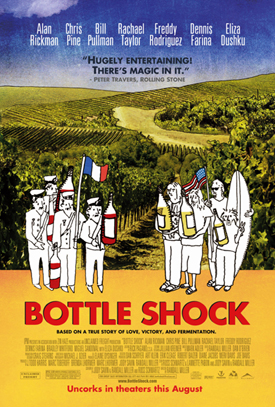
BOTTLE SHOCK
US, 2008, 110 minutes, Colour.
Chris Pine, Alan Rickman, Bill Pullman, Rachael Taylor, Freddy Rodriguez, Dennis Farina, Eliza Dushku, Miguel Sandoval, Bradley Whitford, Joe Regalbuto.
Directed by Randall Miller.
Very embarrassing in these years when so many people know all about wines for this reviewer to admit that he had no idea what bottle shock was. It seems it has something to do with turning the bottles of wine during their maturing.
And, if you didn't know this, Bottle Shock will give you some vineyard and wine information overload. For those who do, then they will revel in this Napa Valley wine story.
It seems that it is based on actual events and the characters both in the US and in France are real personalities who were consultants on the film.
In the early 1970s, Steven Spurrier was an Englishman living in Paris, a connoisseur of wines, who was advised to diversify in his shop's wine stock (by an American expatriate played by Denis Farina). He tours California (with plenty of dialogue illustrating Americans' bemusement with the British, attitudes and expressions) and comes to appreciate the little known wines that he discovers. He sets up a wine tasting competition in Paris as the United States is celebrating its Bicentenary. As played by Alan Rickman, he is a sardonic observer of the wine industry.
Meanwhile, in Napa, Jim Barrett (Bill Pullman) has left a high profile job to create a vineyard with high ambitions to produce a distinctive wine. He is helped by his son Bo (Chris Pine) though his easy going style irritates his father. He is also very wary of Spurrier and his intentions, presuming that the competition is just a set-up to promote French wines.
If wine does not absorb your attention, you will have too much time to observe the odd performance of Bill Pullman, trying to work out his inconsistent motivations and the odd rivalry of Bo and co-worker Gustavo (Freddy Rodriguez) for the attentions of apprentice Sam (Rachael Taylor). One of the climaxes is the seeming failure of the entire output for the year. But, of course, the real climax is the wine tasting – and its results.
Thirty years later, as Spurrier is given lines to say, the French now have rivals from wines from all around the world.
Steven Spurrier, Jim Barrett and Bo Barrett all advised on the film.
1.The factual background of the film? The portrait of the wine industry? Europe and the United States? Rivalry?
2.The title, wine, its manufacture, storage, quality?
3.The contrast between France and the Napa Valley? Paris and the shops, cafés, the growing of grapes, production? The United States, California, the Napa Valley, vineyards, homes, roads, the wine presses, storage, the bars and cafes? The 70s? The musical score?
4.Steven Spurrier, his English background, in Paris, a connoisseur, his shop, failing? The discussions with Maurice? Discussion of wines, American wines? His expertise, Maurice and the running of his café, his clients?
5.Napa Valley, the Barrett family, Jim giving up his accountancy job, his intuition about wine, his hopes, growing the grapes, tending them, harvesting them, the press, storage, the colour – and the discolouration and his wanting to give up? His tough attitudes, Bo and his expectations of his son, Sam as the apprentice with her intellectual background and theory about wine, hard work? Gustavo, his work, making wine on his own, rivalry, firing him? His suspicions of Spurrier? Non-cooperation? His going back to San Francisco, trying to get his job back, the company reaction, the news about the discolouration, his return, his agreement for the competition, sending Bo to represent him?
6.Bo, young, the atmosphere of the 70s, post-Woodstock? His work, clashing with his father, friendship with Gustavo, buying the barrels, his father’s criticism? His interest in Sam? The reckless touch? The crisis with Sam, the clash with Gustavo? The discussions with Spurrier, his father firing him?
7.Sam, the student background, coming to work, interest in Bo, the relationship with Gustavo, Bo’s reaction? Helping with the investigation about the discolouration, the buying back of the stock?
8.Gustavo, friendship with Bo, his family, rival winemaking, his work, being fired, the relationship with Sam?
9.Jim getting rid of the wine stock? Being bought in the bar? Joe and her friendship, the discussions about the wine, selling it back?
10.The issue of discolouration, the experts, learning about wine production?
11.The other growers in the Napa Valley, the meeting, discussions, agreement that the Barretts should represent them?
12.The competition in Paris, Bo and his arrival, the attitude of the French, the tasters, the results? The surprise for the French? The consequences for French wines? The development of American wines?
13.A touch of history, a touch of entertainment – especially for wine lovers?
BATTLE IN SEATTLE

BATTLE IN SEATTLE
US, 2007, 99 minutes. Colour.
Martin Henderson, Michelle Rodriguez, Jennifer Carpenter, Woody Harrelson, Charlize Theron, Ray Liotta, Andre Benjamin, Isaach De Bankole, Joshua Jackson, Tzi Ma, Connie Nielsen, Rade Serbedzija, Channing Tatum.
Directed by Stuart Townsend.
World Trade Organisation meetings come and go, many of them do not make much lasting impact. The meeting in Seattle in 1999 was memorable in the extent of the protest against the G8, the sabotaging of the sessions and the violence in the streets of a city which had high prosperity hopes from hosting the meeting.
Stuart Townsend is best known as an actor (Simon Magus, Queen of the Damned). He does not appear in this film but was the writer and director. He has made a creditable job of evoking and maintaining interest in the dramatising of the protest as well as highlighting the reasons for it. He also shows how best-intentioned protests can be disrupted by extremists whose violent behaviour brings in the authorities who meet violence with violence (as was shown in such films as Paul Greengrass's re-creation of the clashes in Derry on Bloody Sunday).
Townsend has integrated footage from the time to give his film greater realism and urgency.
The screenplay is a day-by-day account beginning with the preparations for the meeting, the plans of the mayor (Ray Liotta) for security, the strategies of the protesters and their non-violent intentions. A fictional story is introduced to show ordinary, non-political people, in Seattle as well as the story of a security policeman. Charlize Theron is a pregnant woman who works in a city store and is unwittingly trapped in the mayhem in the streets. Woody Harrelson is her husband, a loving man, who is caught up in the police activity and, in a surprisingly shocking sequence, loses his cool and bashes the leader of the protest (Martin Henderson).
The media is ever-present, the focus being on an ambitious reporter (Jennifer Carpenter) who opts to stay with the riots rather than film the arrival of Bill Clinton and finishes up arrested and re-thinking her political position.
With the editing and pace, Townsend is able to stir up his audience just as the protesters and the police are being stirred up. Particularly telling is a small sub-plot where a doctor from Medicins Sans Frontieres (Rade Serbedzija) is prevented from getting to a conference and, later, when he has an opportunity, he is confronted by pharmaceutical company representatives.
The film takes the side of protest and argues the possibility of peaceful demonstration when it is controlled and participants co-operate. The film also shows the hotheads, their more fanatical approach, whether ideological or simply anti-authoritarian, and the disastrous results. The repercussions for the city and for innocent victims caught up in the violence are also shown.
A very interesting example of a film with social concern, emotionally involving its audience as well as asking them to think through their attitudes.
1. A political drama? Perspectives from left-wing ideologies, right-wing ideologies? World economics? World protests? The World Trade Organisation?
2. The setting, the meeting, the choice of Seattle, the visuals of the city, the preparations, the venue for the meeting, security issues, the protesters? The lives of ordinary people, jobs, shops, the police? The style of filming as film, as television, as news?
3. The title, the perspective on 20th century protest and the World Trade Organisation?
4. The presentation of the city authorities, the mayor, his ambitions for the city, issues of security, the meetings and discussions, the role of the police, the plans, the confrontation of protests, the escalating riots, the action of the police, the decision to call in the National Guard, the discussions with the governor? The decisions, the failings and reputations lost? The governor and his intervention?
5. The range of protesters, Jay, his background, family, relationships, Lou and Sam? The motives for being there? The plan for the protest, peaceful? The political stances, the group and their interactions, accommodation, discussions? The meetings, the accommodation, the plans, the procession, the agitators and the disruption, the breaking of property, the reaction of the police? Speeches, attempts to persuade the crowd to disband? The reaction of the delegates, the workshops and speeches, the dispersal of the delegates?
6. The police, the focus on the police, their job, instructions, the cordons, the batons and the bashing?
7. The focus on Ella and Dale, at home, her pregnancy, as focusing the ordinary citizens of Seattle? Ella and her work, shopping, pregnant? Her being caught, her being thought of as a protester, her being bashed, going to hospital, the miscarriage?
8. Dale, at work, preparation for the demonstrations, his attitudes, discussions with his fellow police, the confrontations? The pressure, the conflict with Jay, bashing him, his anger? Ella, at the hospital? His coming to his senses, going to the prison to apologise?
9. Jay, the reasons for his presence, his leadership, relationship with Lou? The experience of the protest, getting out of hand, his going to prison?
10. Django and his style, the individuals in the protest?
11. Jean, her work as a journalist, the encounter with Ella, the arrest, her being in prison, the prison experience and her understanding?
12. The bystanders, their being caught up in the riots?
13. The vividness of the crowd sequences, the different perspectives, the government action, the collapse? Ella and Dale in this context, the sadness of the miscarriage?
14. The film as provocative? Raising issues for discussion? Its being condemned as left-wing propaganda?
AMERICAN TEEN

AMERICAN TEEN
US, 2008, 95 minutes, Colour.
Directed by Nanette Burstein.
A documentary that plays like a feature film, following five principal characters through their final high school year. It really does not tell us anything new about American teens, nothing that we have not seen in many films. It is how the film was shot and edited is very interesting.
Nanette Burstein decided she would spend a year in a mid-west town with only one high school which served as a centre for the whole town. Finally, she chose Warsaw, Indiana, an ordinary town, very much a white town, with some wealthy families but, more or less, middle America.
She chose five students whose stories seemed interesting and varied and who were willing to share their stories with her. She must have gained their trust because they are filmed throughout the year, frequently in close-up (sometimes the director used a small camera rather than a crew) and speak their minds and emotions very directly and intimately indeed.
The five students are what we might expect. The main focus is on Hannah who feels a misfit in this conservative town and wants to go to film school on the West Coast. Her parents, loving in their way, live away from home and she stays with her grandmother. She has an enormous emotional crisis when she is dumped by her boyfriend and can't face school. The opposite is Megan, from a rich family who would be at home in the clique in Mean Girls, though she is not as mean as all that. She presumes that things will always go her way.
The boys are quite a mixed bunch. Colin is the basketball star who hopes for a sports scholarship. His father (who is an Elivs impersonator) eggs him on but has the good sense finally to see that his advice and pressure is not the best. Jake has to be the most acne-faced teenager you will ever see on film. He has been typed as a geek and has taken refuge in shyness and acceptance of the geeky self-image even though he wants to break out of it and display a bit of wild side. Mitch is the inevitable prom king type who ventures into having Hannah as a girlfriend and then blows it.
The director checked each day with how the five were faring in their stories and so knew which one to be with during the day. Then, using the calender year at school with seasons, basketball matches, socials and prom, with graduation at the end as the framework, she edited the hundreds of hours of film shot. Apart from the usual preoccupations, emotional immaturity and growth, the succumbing to peer opinion if not pressure and the expected behaviour of teens, they are not too bad a group.
1.The impact of the documentary? An impact like a feature film and its narrative and characters?
2.The work of the director, selecting the town, selecting the students, getting their trust, spending a year with them, following each of their stories, discussions and intimacy, the selecting and editing of the footage? The insertion of the animation to indicate their fantasies and dreams?
3.The explanation for the choice of Warsaw, Indiana? The Midwest, race issues, minimal? Class issues? Expectations?
4.The town population, the one high school, the campus and its view, the students, their clothes, manners, talk? The classrooms, the cafeteria? The basketball area? Basketball and the town and its loyalties? The celebrations, the prom? An authentic feel? Audiences identifying and/or observing the characters?
5.The range of the year, the seasons, the students’ development, the celebrations, the competitiveness, the basketball competitions? The pressure for graduation and college entry?
6.The parents in the background, Hannah’s mother and her depression, living away from home? Her father and his work interstate, his concern? The father and his helping his daughter? Their both giving advice at the end? Colin’s father, the pressure on his success at basketball, scoring? His being an Elvis impersonator? His change of advice later and pride in Colin? Megan, her wealthy background? Jake, the glimpse of his mother, his brother in San Diego in the military, and his taking Jake out for a night on the town?
7.Hannah’s story: feeling the outsider, wanting to leave, ambitions for film school, antagonism towards conservative attitudes? Her parents and their absence, their presence and their advice? Living with her grandmother, her grandmother’s friends? At school, the friend and support? Her relationship with Joel, in love, expectations, the sexual encounter, the immediate break-up, her emotional collapse, avoiding school for so long, her father driving her to school, her not wanting to go, the interview with the principal, her eventually going back to class? The meeting with Mitch, happy with him, the others looking down on her? His break-up by text? The prom, her friend going with her, the dress, success? Her parents and the advice about college? Going to San Francisco, getting a job, returning, going to New York to study?
8.Colin, one of the school jocks, as a personality, the pressure of his father, his father’s ambitions? His father as the Elvis impersonator, wanting Colin to be one, Colin’s not wanting it? Colin playing, scoring, his friends, the locker room? His college aims and the scholarship? The defeat and the reaction of the town, his depression in the cafeteria? The dent to his self-image? His father advising him for teamwork, the practice, the matches, winning, his pride in being a team member, the scouts talking with him, success? The other members of the team – and the African American in the group?
9.Mitch, one of the jocks, his peers, with Hannah, people criticising him for going out with her, texting the end of the relationship? His change of heart at the end and learning from the experience?
10.Megan, her wealthy family, the Mean Girls' attitude? Her clique, her friends, her reactions to her friends, bossing, gossip? Successful, the aim to go to Notre Dame, the discussions about it and life there? Her clash with Erica and the boyfriend? Manipulating people?
11.Jake, the extent of his acne, low self-image, the detail of his room, computer games, himself as a computer game hero? Admitting he was a geek, putting himself down? In class, his locker? His discussion about girls, wanting a wild side, his being ignored? The new girl, inviting her out, talking, bonding, she going off with the other boy, the break-up, not going to the prom? Going to San Diego, his aims, his brother wanting him to be wasted, his drinking, behaviour, with the girls? The young girl visiting Chicago, going to the prom with him, his happiness? Still open at the end?
12.The other characters, Erica and her boyfriend, the group at school, the cross-section of Americans?
13.How much insight and/or confirmation of attitudes towards American teens?
Sacred Heart Monastery, Kensington, Tree Planting, Season of Creation
Sacred Heart Monastery, Kensington, Tree Planting, Season of Creation
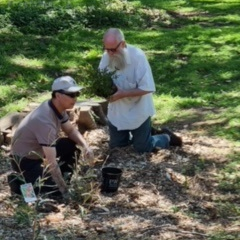
MSC Update: Roger Purcell: To coincide with the “Season of Creation”, Sept 4-Oct 4 (Feast of St Francis),

Roger organised a “tree planting” as part of an existing plan to plant more natives around the Monastery.

Mark, the gardener, and more than 20 community members planted 23 trees and bushes.
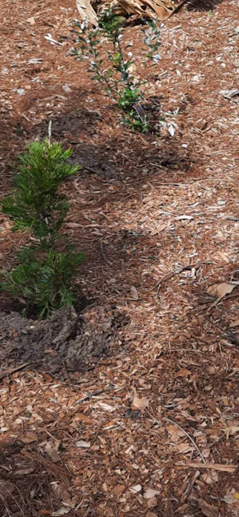
He even placed a seat strategically close by so people can sit and admire their growth in the months and years ahead.
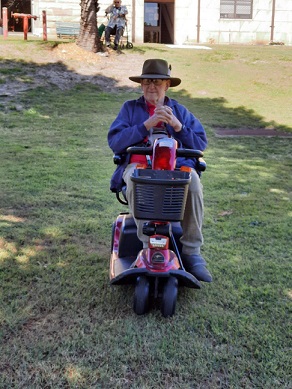
And a glimpse of Martin Wilson
Our Lady of the Sacred Heart College, Bentleigh, Melbourne. Jules Chevaliler and Marie Louise Hartzer Statues.
Our Lady of the Sacred Heart College, Bentleigh, Melbourne. Jules Chevaliler and Marie Louise Hartzer Statues.
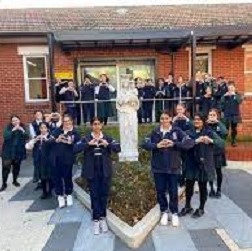
Melbourne is still in lockdown, including schools, but…

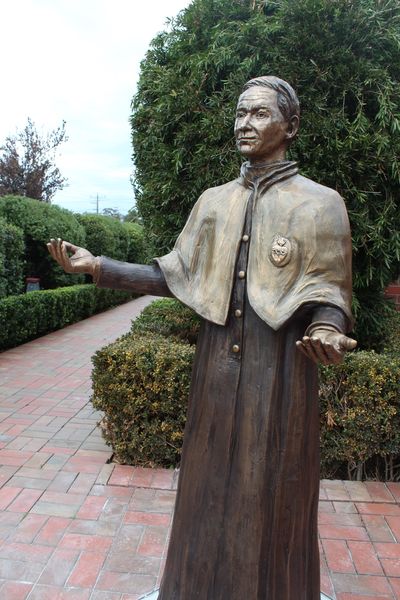
The first thing the students, staff, and families will notice when they return to OLSH College Bentleigh is the striking new bronze statues of Mother Marie Louise Hartzer fdnsc and Fr Jules Chevalier msc. Their presence is a beautiful reminder of the vital role that both Marie Louise and Jules played in establishing the Daughters of Our Lady of the Sacred Heart and consequently OLSH College Bentleigh some 83 years ago.
These two people were God's gift to our world; they were the bearers of the OLSH Spirit we share. The sculptures are a tribute to the amazing work of the OLSH Sisters in their mission to make the Sacred Heart of Jesus everywhere loved and, they remind us to keep this same mission alive. With our gratitude to the OLSH Sisters and to the creators of these statues Christine Sage and Regina Byrne (Hullabaloo Studios) and Mal Wood Foundry.
And an August lockdown story:
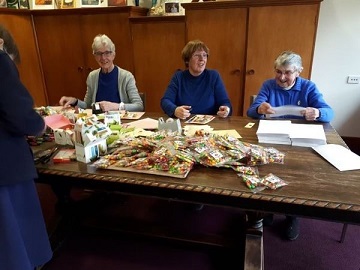
All OLSH College Bentleigh girls received something special in the post this week, it was a "Little something to highlight their day." The small gift bag from the College contained a highlighter, post-it notes, a teabag, and some OLSH branded M & M's. It really was just a gesture to show that, even though we cannot all be together at the moment, that the girls are in all of our thoughts each and every day and we are so proud of how they are handling the challenges of the lockdown. Special thanks to the wonderful OLSH Sisters and the College Staff who helped to put together the gift bags, very much appreciated.

